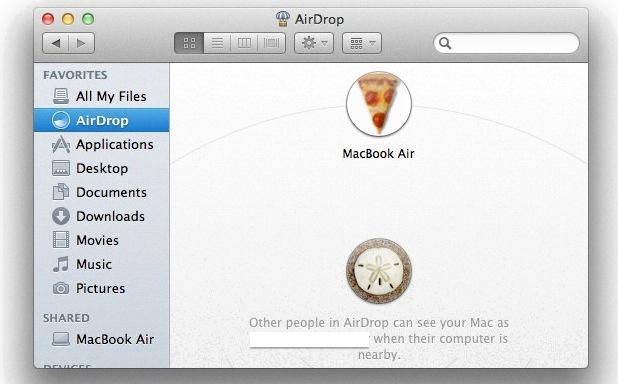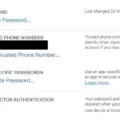AirDrop is a handy feature on Mac that allows you to easily share files with other Apple devices. It utilizes Bluetooth and Wi-Fi connections to establish a direct connection between devices, making file transfer quick and convenient. However, there may be instances where AirDrop gets stuck on “Waiting” and doesn’t seem to work properly. In this article, we will explore some common FAQs about why AirDrop gets stuck and how to enable AirDrop on your Mac.
One possible reason for AirDrop getting stuck on “Waiting” is that the devices you are trying to connect are not close enough to each other. AirDrop works best when the devices are within close proximity, so make sure your iPhone or Mac is near the device you want to share files with.
Another reason could be that your iPhone or Mac is not meeting the minimum requirements for AirDrop. To use AirDrop, your iPhone needs to be running iOS 7 or later, and your Mac should have OS X Yosemite or later installed. Check if your devices meet these requirements to ensure smooth AirDrop functionality.
Additionally, it’s important to check if Wi-Fi and Bluetooth are turned on for both devices. AirDrop relies on these wireless connections to establish a direct connection between devices. On your Mac, click on the Control Center icon and toggle off the Wi-Fi and Bluetooth switches. Wait for a few seconds and then toggle them on again. This simple step can often resolve connectivity issues with AirDrop.
It’s worth mentioning that if you have enabled a personal hotspot on any of the devices, it may interfere with AirDrop. Personal hotspots use Wi-Fi and Bluetooth connections, which can conflict with AirDrop. In such cases, disabling the personal hotspot or turning off Wi-Fi and Bluetooth on the device with the personal hotspot enabled can help resolve the issue.
Steps to Enable AirDrop on Your Mac
1. Click on the Finder icon in the Dock to open a Finder window.
2. From the menu bar at the top of the screen, click on “Go” and then select “AirDrop.”
3. In the AirDrop window, you’ll see options to set your visibility. Choose either “Contacts Only” or “Everyone” depending on your preferences.
4. Now, your Mac is ready to accept files through AirDrop.
To send files from your Mac using AirDrop, simply right-click on the file you want to share, select “Share,” and then click on the AirDrop icon. Choose the device you want to send the file to, and the transfer will begin.
On the receiving device, you’ll receive a notification asking if you want to accept the file. Click on “Accept” to receive the file, and it will automatically be saved to your Downloads folder.
AirDrop is a convenient feature on Mac that allows you to share files seamlessly between Apple devices. If you encounter any issues with AirDrop, try turning off and on Wi-Fi and Bluetooth, ensuring devices are close enough, and checking if the devices meet the minimum requirements. By following these steps, you can enable AirDrop on your Mac and enjoy hassle-free file sharing.
Why Can’t You AirDrop to Your Mac Anymore?
There could be several reasons why you are unable to AirDrop to your Mac. Here are some possible explanations:
1. Wi-Fi and Bluetooth: AirDrop requires both Wi-Fi and Bluetooth to be enabled on your Mac. Ensure that both are turned on by clicking on the Control Center icon on your Mac, then toggling the Wi-Fi and Bluetooth switches to the on position.
2. Wi-Fi and Bluetooth Interference: Check if there are any devices or objects that may be causing interference with your Wi-Fi and Bluetooth signals. Move your Mac closer to the sending device and away from any potential sources of interference, such as other electronic devices or physical obstructions.
3. AirDrop Compatibility: Ensure that your Mac is compatible with AirDrop. AirDrop is supported on Mac models released in 2012 or later, running OS X Yosemite or later. Check your Mac’s specifications to confirm compatibility.
4. AirDrop Visibility Settings: Make sure that your Mac’s AirDrop visibility settings are properly configured. Open Finder on your Mac, click on AirDrop in the sidebar, and ensure that the “Allow me to be discovered by” setting is set to “Everyone” or “Contacts Only” depending on your preference.
5. Firewall and Security Settings: Check if any firewall or security settings on your Mac are blocking AirDrop connections. Temporarily disable any third-party firewall or security software and try AirDrop again to see if it works. If it does, adjust your settings accordingly to allow AirDrop connections.
6. Software Updates: Ensure that your Mac’s operating system and AirDrop software are up to date. Check for any available software updates by clicking on the Apple menu, selecting “System Preferences,” and clicking on “Software Update.”
If none of the above solutions work, you may need to troubleshoot further or seek assistance from Apple support or a professional technician.

Where Does AirDrop Go on Mac?
AirDrop is a convenient feature that allows you to wirelessly transfer files between Apple devices. When you receive a file through AirDrop on your Mac, it will be automatically saved to the Downloads folder. This folder is the default location for files downloaded from the internet or received through various applications, including AirDrop.
To locate the Downloads folder on your Mac, follow these steps:
1. Click on the Finder icon in the Dock, which is the icon that looks like a blue face.
2. In the Finder window that opens, you will find a list of shortcuts on the left-hand side. Click on “Downloads” under the “Favorites” section.
3. The Downloads folder will appear in the main window, displaying all the files you have received through AirDrop or downloaded from the internet.
If you prefer to change the default location where AirDrop files are saved, you can do so by adjusting your Mac’s settings. Here’s how:
1. Click on the Apple menu in the top-left corner of the screen and select “System Preferences.”
2. In the System Preferences window, click on “General.”
3. Look for the “Save downloaded files to” option and click on the drop-down menu next to it.
4. Choose a new location where you want AirDrop files to be saved, such as the Desktop or a specific folder.
5. Close the System Preferences window, and from now on, files received through AirDrop will be saved to the new location you selected.
By following these steps, you can easily locate and manage files received through AirDrop on your Mac.
Why is AirDrop Stuck on Waiting?
There are several common reasons why AirDrop may be stuck on waiting:
1. Devices are not close enough: AirDrop requires the devices to be within close proximity to establish a connection. If the devices are too far apart, AirDrop may not be able to connect them. Make sure the devices are close enough to each other.
2. Minimum requirements not met: AirDrop has specific minimum requirements for both iPhones and Macs. If your device does not meet these requirements, AirDrop may not work properly. Ensure that your iPhone or Mac fulfills the minimum requirements for AirDrop.
3. Wi-Fi or Bluetooth turned off: AirDrop relies on both Wi-Fi and Bluetooth to function. If either Wi-Fi or Bluetooth is turned off on any of the devices, AirDrop will not work. Double-check that both Wi-Fi and Bluetooth are enabled on all devices involved.
4. Personal hotspot enabled: If you have enabled a personal hotspot on your iPhone, it can interfere with AirDrop. Personal hotspots use the same technology as AirDrop, so they can cause conflicts. Disable the personal hotspot feature on your iPhone.
Conclusion
AirDrop is a convenient and efficient way to share files wirelessly between Apple devices. It offers a seamless and hassle-free experience, allowing users to quickly and easily transfer files of various types and sizes. However, like any technology, AirDrop can sometimes encounter issues or get stuck on waiting.
To troubleshoot these problems, it is important to ensure that both devices are in close proximity to each other and meet the minimum requirements for AirDrop. Additionally, checking that Wi-Fi and Bluetooth are turned on, and disabling any personal hotspots can also help resolve connectivity issues.
Furthermore, turning off and then on again both Wi-Fi and Bluetooth on your device can often solve various problems with wireless connections, including AirDrop. This simple step can help refresh the connection and resolve any glitches or conflicts that may be causing AirDrop to get stuck on waiting.
AirDrop is a valuable feature that enhances the convenience and efficiency of file sharing between Apple devices. By following the suggested troubleshooting steps and ensuring that all necessary settings are enabled, users can make the most out of AirDrop and enjoy seamless file transfers.













